A Letter to Mrs. Virginia Woolf by Lauren Garbett
I was initially drawn to A Letter to Mrs. Virginia Woolf, by Peter Quennell because of its size. Among the rest of the artifacts on the table, this one stood out. It was small, thin, and bound with string. I eventually chose it because I felt that, despite its size, it must be historically important or impactful if it was included with the rest of the artifacts.

This work is the twelfth and final in a series of letters published by Leonard and Virginia Woolf, under a publishing company entitled Hogarth Letters Series. The second page of the work, before the title page, lists other letters published under the same company name. Each letter is written by a different author, and one of which is written by Woolf herself, entitled “A Letter to a Young Poet.” Quennell’s letter to wolf is a response to her letter to the young poet, and it was first published in 1932 in Great Britain.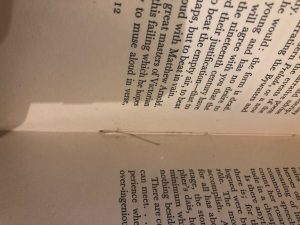
Before I addressed the letter’s content, I first examined its physical qualities. The work has become yellowed with time, and as previously stated, is fragile because it is bound together by string. There are pages where loose pieces of string protrude from the binding, which further highlights its fragility. I feel that the work was bound in such a way in order to convey the importance of the letters inside. Its fragility also makes it seem more personal; as if the letters are addressed directly to the reader.
On the front of the letter is a drawing of a book, filled in with a shade of blue that reminds me of a feeling of melancholy often associated with Woolf’s works. This shade leads me to feel melancholic because of blue’s association with cold and loneliness. On top of the book is a drawing of a blue hand holding a white pen. The hand blends into the blue on the book, which leads me to see the hand as trying to blend into the background. I found the veins on the hand, which are white and made to look almost like tree branches, interesting as well. Again, this reminds me of Woolf’s use of nature in her works, such as in “The Lady in the Looking Glass.”
Despite the letter’s solemn cover, its actual content seems to be a playful mockery or attack on Woolf by Quennell, especially because of her distaste of the young poet’s work. I feel that we often place famous deceased writers on pedestals, in the sense that we do not critique their works in the same way we would for less famous, living authors. Thus, it is interesting to see someone critique Woolf, who is often hailed as an impenetrable force of writing. Quennell explains to Woolf that, her style of writing, which is often described as modernist, impressionistic, and lyrical, is not the only valid style of writing. He compels her to be more open to other styles of writing, especially historical poetry, and to be sensitive to the ways in which history affect a poet’s work.

It seems that people often assume that if a work is produced by a famous writer, it must be flawless. Reading a letter like this allowed me to reflect on Woolf’s work in a way that no longer holds her onto a pedestal but examines her writing style and movement in a more objective light. It’s even more interesting to think that Woolf allowed such a critical letter to be included in a collection published by her company. This leads me to believe that she wants the audience to see that she is comfortable with her opinions and writing being critiqued, allowing them to no longer see her as someone who should necessarily be idolized. Despite her successes, she still recognizes that she has room to grow as a writer.
In “The Lady in the Looking Glass” the reader exposed to a woman who is initially seen as powerful, rich, and happy. Through the looking glass, however, her life is not nearly as successful as it is made to seem. This letter can be compared to the looking glass in the sense that it allows us to re-examine Woolf from a more critical mindset. And, because Woolf published this letter, I believe that she is embracing such looking glass.
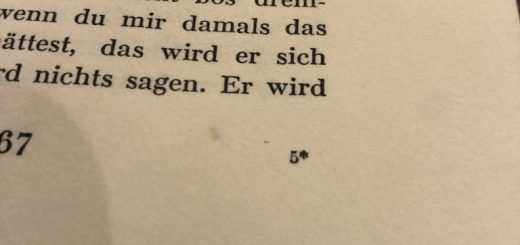

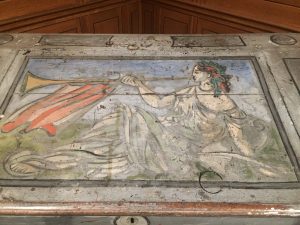
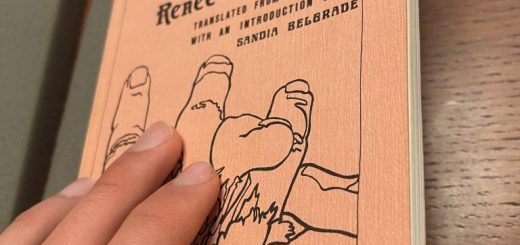
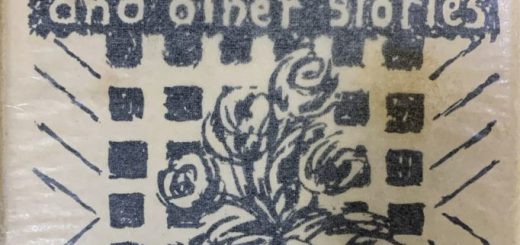
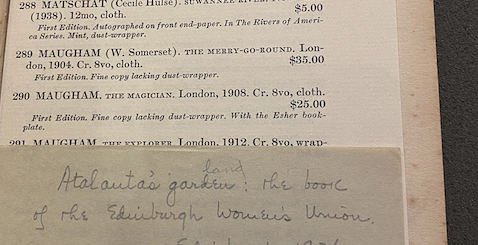



Recent Comments